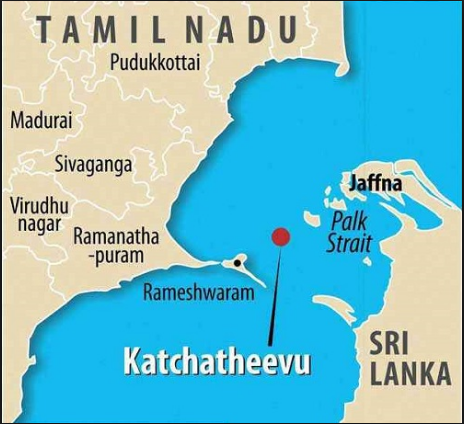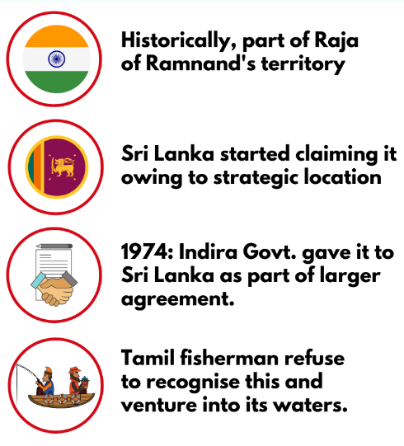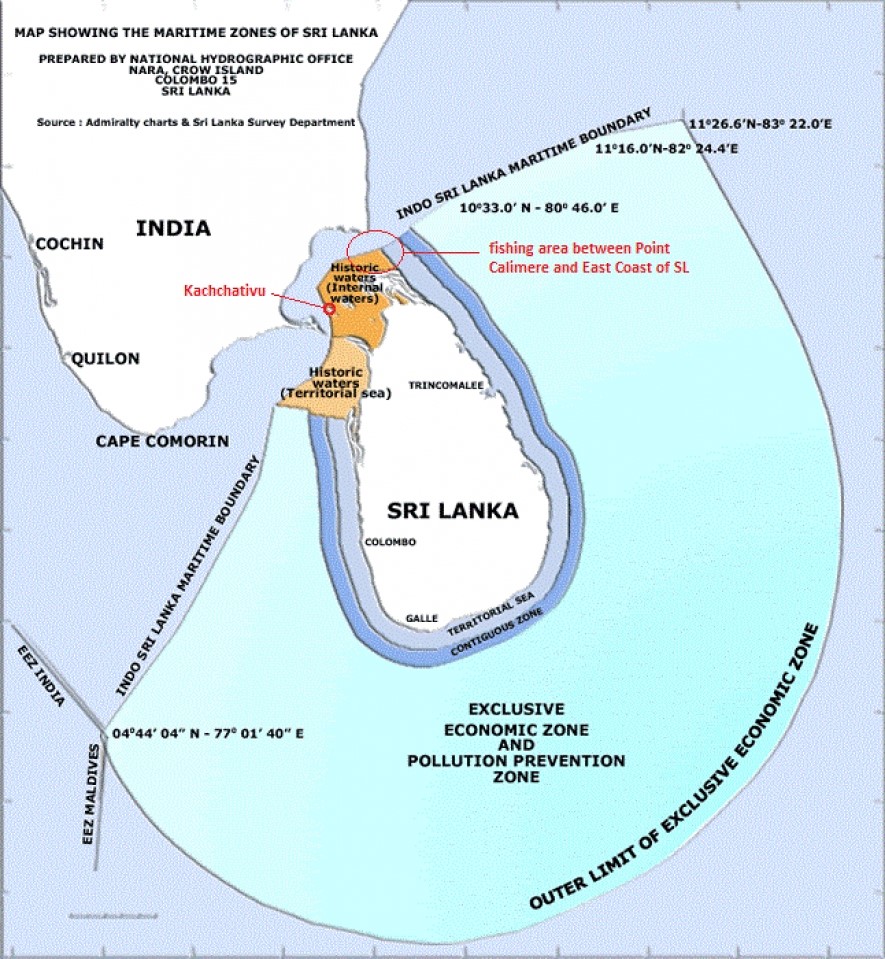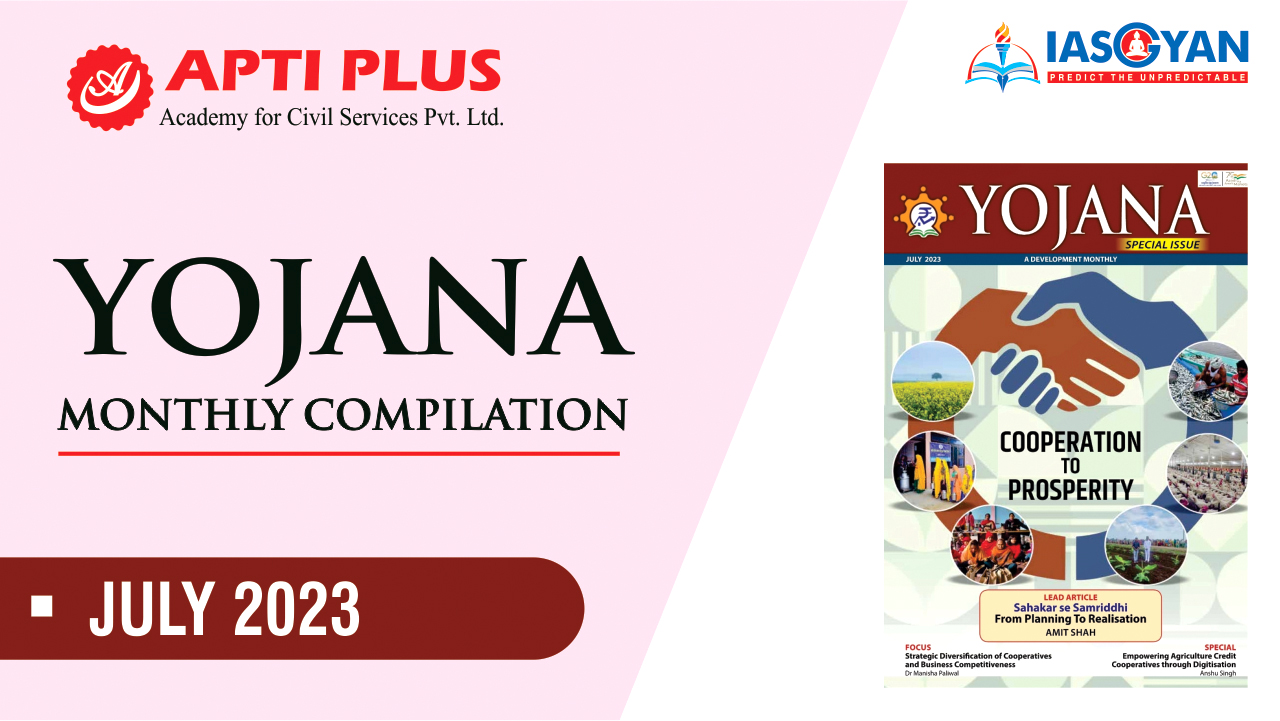Description

Disclaimer: Copyright infringement not intended.
Context
- Prime Minister Narendra Modi, in his speech in the Parliament mentioned the island of Katchatheevu.
Katchatheevu Island
Location
- Katchatheevu is an uninhabited off-shore island in the Palk Strait.
- The island is located between Neduntheevu, Sri Lanka and Rameswaram, India.
Formation
- It was formed due to volcanic eruptions in the 14th century.
Administration and History
- The 285-acre land was jointly administered by India and Sri Lanka during British rule.
- The Raja of Ramnad (present-day Ramanathapuram, Tamil Nadu) owned Katchatheevu island and later became part of the Madras Presidency.
- In 1921, both Sri Lanka and India claimed this piece of land for fishing and the dispute remained unsettled.
- After Indian independence, the country initiated to resolve the pre-independence territory dispute between Ceylon and the British.
- Today, the uninhabited island is administered by Sri Lanka.

Conflict
- Fishermen of both countries have been fishing in each other's waters without conflict for a very long time. The issue emerged when both countries signed four Maritime Boundary Agreements between 1974-76. The agreement marked the international maritime boundary of India and Sri Lanka.
- In 1974, then Prime Minister of India, Indira Gandhi accepted Katchatheevu as Sri Lankan area under the "Indo-Sri Lankan Maritime Agreement" aimed at resolving the maritime boundaries in the Palk Strait.
- Another agreement signed in 1976 restricted both the countries’ fishermen from fishing in the other’s exclusive economic zones.
- The agreement aimed to facilitate resource management and law enforcement in the Palk Strait. Now, Indian fishermen were only allowed to use the island for resting, net drying and the annual St. Anthony’s festival.
- They are not permitted to use the island for fishing. However, Indian fishermen continued trespassing the Sri Lankan water boundary, searching for better catch in the area.
- The next few decades went well but the problem turned serious when fish and aquatic life in the Indian continental shelf depleted, which resulted in an increased number of Indian fishermen in the region. They are also using modern fishing trolleys which harm marine life and the ecosystem.
LTTE era and restrictions on movement
- During the LTTE (LiberationTigers of Tamil Eelam, a separatist group in Sri Lanka) era, the Sri Lankan government restricted the easy movement of Sri Lankan fishermen in waters raising military operations issues.
- The Indian fishermen considered this as an opportunity.
In 2009, Sri Lanka started heavily guarding its maritime boundary in the Palk Strait. It was done to reduce the possibility of the return of Tamil insurgents to the country. With the end of the war in 2010, Sri Lankan fishermen again started their movement in Palk Bay and reclaimed their lost legitimate territory.


Humanitarian and Livelihood Concerns
- About 10 miles northeast of Rameshwaram, the island is used by Indian fishermen to dry their nets, catch fish and rest.
- Frequent arrests on the border have increased and Sri Lankan authorities said that they are protecting their maritime boundaries against poaching, and securing the livelihood of Sri Lankan fishermen.
- Both sides ensure not use of force under any circumstances. However, the violent situation remains the same.
- Between 1983 and 2009, the Sri Lankan Navy was responsible for the deaths of around 250 fishermen; in addition, hundreds of fishermen were hurt, had their equipment destroyed, or had their catch confiscated.
Critical analysis through relevant international law concepts
- As discussed above, the Indian fishermen have long been arrested on the Sri Lankan side of the International Maritime Boundary Line (‘IMBL’) in the Palk Strait and the Gulf of Munnar, with the Sri Lankan Navy firing on Indian fishing vessels.
- India and Sri Lanka concluded a few agreements in 1974 which defined their IMBL, aiming to safeguard their maritime resources and fishing rights in the Indian Ocean.
- In Articles 5 and 6 of the “Agreement between Sri Lanka and India on the Boundary in Historic Waters between the two Countries and Related Matters, June 1974”, India acknowledged Sri Lanka’s sovereignty over Kachchatheevu. This decision was made to strengthen bilateral relations.
- Traditionally, Indian fishermen and pilgrims have been able to access the island unhindered, according to a 1974 agreement that safeguarded their rights. Article 5 provides the right to travel without travel documents and Article 6’s customary rights permit fishing in the waters around Katchatheevu, but the dispute persists.
- It is peculiar to note that the “Agreement between the Government of India and the Government of the Republic of Sri Lanka on the maritime boundary in the Gulf of Manaar and the Bay of Bengal, 1976” overrides the 1974 agreement, which deals with the settlement in the maritime boundaries in the Gulf of Munnar, the Bay of Bengal and in the island of Katchatheevu, but it fails to specify the fishing rights of the fishermen of Tamil Nadu, who have consequently been deprived of fishing rights around Katchatheevu and the Palk Bay ever since then. Therefore, uncertainty surrounding the 1976 agreement is the main cause for the ongoing conflict.
- The 1976 agreement restricted the movement of fishing vessels. However, due to the Sri Lankan Navy’s limited capabilities and sensitive diplomatic considerations, these restrictions were not implemented strictly.
Principle of territorial sovereignty of Katchatheevu Island and the doctrine of abuse of rights
- Katchatheevu is an uninhabited islet in the Palk Strait that was formed by a 14th-century volcanic eruption. The 285-acre land contains St. Anthony’s Shrine. The Raja of Ramnad (Ramanathapuram) owned the territory, which became part of the Madras Presidency after the British delimited the Gulf of Mannar and Palk Strait between Madras and Ceylon. India acknowledged Sri Lanka’s right to the land.
- The two agreements delimit the maritime boundary following the United Nations Convention on Law of Seas (‘UNCLOS’). Typically, maritime boundaries are defined by the equidistance notion, which states that a nation’s marine boundary should be a medial line that is equidistant from the coastal areas of two bordering countries.
- However, in the 1974 Boundary Agreement, an adjusted equidistant line was drawn, and maritime spaces were granted to one party for the benefit of others. Both the countries have notified the agreements under the UNCLOS. The agreement noted Article 15 of the UNCLOS, which exempted the use of median lines to determine the IMBL and recognised the adjustments agreed to by the contracting nations. Due to this, Katchatheevu island fell on the Sri Lankan side of the IMBL.
- In addition to that, the agreements entered into by India and Sri Lanka are binding under the Vienna Convention on the Law of Treaties, 1969 (‘VCLT’). Both Agreements do not discuss the possibility of either termination or a withdrawal.
- According to Article 56 of the VCLT, India cannot unilaterally revoke the agreement. In order to withdraw from the treaty, India is required to notify Sri Lanka and acquire the latter’s consent to the same under Article 65(1). Further under the provisions of Article 65(1), before withdrawal, India will have to inform and get the approval of Sri Lanka.
- If Sri Lanka does not give its assent, then the two countries will have to seek recourse under Article 33 (Pacific Settlement of Disputes) of the UN Charter, which allows the UN Security Council (‘UNSC’) to direct the countries by peacefully settling the issue, that is, by involving a third-party or by sending the matter to arbitration, and in case of failure, to do the same, the UNSC can refer the matter to the International Court of Justice under the UN Charter’s Article 37.
- However, both the countries have opposed any disruption to the status quo with regards to the maritime boundary. Therefore, third-party intervention may threaten Indo-Sri Lankan relations, and runs contrary to India’s current “Neighbourhood First” policy.
Is it better to settle disputes diplomatically rather than through international tribunals ?
- In the current scenario, the International Tribunal for the Law of the Seas (‘ITLOS’) has prima facie jurisdiction as per Part XV (Settlement of Disputes) of the UNCLOS. A critical question is why, even after being signatories to the UNCLOS, Sri Lanka and India have not sought resolution of this dispute through international tribunals. The answer lies in the presence of various factors.
- Sri Lanka is a relatively small country when it comes to its economy and population, and is strongly reliant on India. For instance, India was the largest contributor of Foreign Direct Investment for Sri Lanka in 2019 at $139 million.
- Keeping the same in mind, Sri Lanka runs the risk of jeopardising its economic ties, which would have far-reaching effects beyond the predicament of the fishermen. Further, the Tamils of Sri Lanka and India have excellent cultural ties.
- As a result, any poor decision will have negative economic and political consequences for both nations.
Due diligence for the environment and a precautionary approach
- While fish consumption in India remains low – the average per capita fish consumption in India is 9 kg per annum, against the global per capita fish consumption of 16 kg per annum, it does possess some of the world’s richest inland water fisheries while sharing 7.58 per cent of the global fish production and an Exclusive Economic Zone which is the 18th largest in the world.
- India is the second-largest producer of fish in the world, with a yield of 6.3 million tonnes. Given the economic difficulties caused by the COVID-19 pandemic, marine product exports were valued at Rs. 43,717.26 crore ($5.37 billion) for the 2020–21 financial year.
- The international community’s concerted efforts on fisheries conservation are highly encouraged by the UN Sustainable Development Goal 14, which calls for the elimination of illicit, unreported and unregulated fishing activities.
- State government endorsements of trawler fleets result in India not complying with international regulations protecting marine biodiversity. At present, there are 2,490 mechanised fishing vessels, 12,443 motorised fishing vessels, and 1,020 country crafts that are engaged in fishing in the traditional waters of the Palk Bay area. It would hurt India’s position if it went before an international body like the ITLOS, as India is in breach of its obligation of preservation and protection of marine environment under Part XII of the UNCLOS.
- Further, Articles 194 and 204 of the UNCLOS mandate India to take precautions to protect the maritime environment. Additionally, India’s Sethusamudram Canal Project (‘SSCP’), which intends to provide a new shipping route between the Gulf of Munnar and the Bay of Bengal, has come under scrutiny. India may be held liable for violating Article 206 of the UNCLOS as a result of its failure to conduct an adequate investigation into the possible effects of the SSCP on the maritime environment of Sri Lanka.
- Similar to the 2001 decision in the MOX Plant Case, the ITLOS has identified the duty to cooperate as a fundamental principle in the regime for the prevention of pollution of the marine environment under Part XII of the Convention and international law in general.
- According to Articles 123 and 197 of the UNCLOS, both nations have a responsibility to cooperate and coordinate in the management and protection of marine ecosystems. In this case, when political considerations outweigh legal flaws, a bilateral settlement will benefit both nations.
Stand of the Indian Government
- According to the Ministry of External Affairs, the government concluded maritime boundary agreements with Sri Lanka in 1974 and 1976.
- According to the agreement, the Island lies on the Sri Lankan side of the India-Sri Lanka International Maritime Boundary Line. The matter is still sub-judice in the Supreme Court of India.
- The government has raised the issue at the highest political level with Sri Lanka. According to agreements, the issue was bilaterally resolved and allowed Indians to visit the island for the pilgrimage without any requirement of a visa.
What lies ahead?
- Neither India nor Sri Lanka defined a shared rationale for punitive action or peaceful settlement when they signed the agreement. As a result, Sri Lanka has taken drastic steps of penalising fishermen with one crore INR as bail amount.
- Furthermore, it is urged that both the governments agree to “coordinated patrols” by both nations’ naval forces. It should be practiced to the point of detaining and handing over the accused to their respective nations, where they will be judged for the same offence, rather than the harsh and barbaric conditions of the other country.
- According to recent reports, the Sri Lankan fisheries ministry has raised this long-running fisherman’s complaint with United States Ambassador Martin K. Kelly. Furthermore, rumours have surfaced of Chinese ships approaching this area. For a considerable time, transgressions have become a cause of national security worry, leading to job losses and environmental deterioration. Diplomatic accomplishment is defined by the ability to turn a crisis into an opportunity. It is an excellent opportunity for India to move fast and address the issue before any third party complicates matters further.
- Keeping the gravity of the situation in mind, it is imperative to look out for the fishermen and provide them with sustainable alternatives to bottom-trawling, which will secure the future of both the Indian and Sri Lankan fishermen without jeopardising the existing bilateral relationship.
|
PRACTICE QUESTION
Q. Critical analyse the India-Sri Lanka Fishermen's Issue through relevant international law concepts. Is it better to settle disputes diplomatically rather than through international tribunals? Discuss.
|

https://indianexpress.com/article/explained/explained-politics/pm-modi-katchatheevu-tamil-nadu-8887679/














